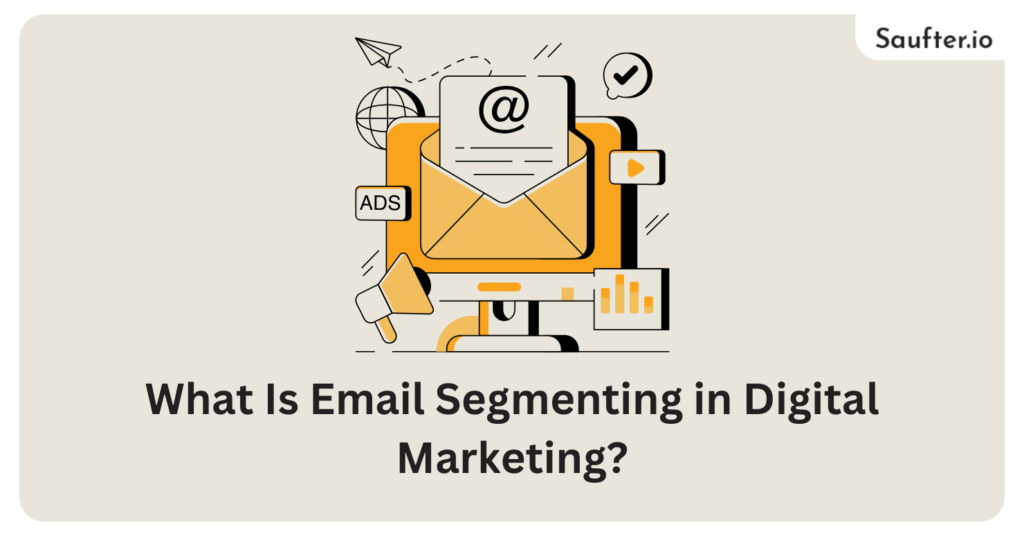Last Updated: December 2025
In today’s competitive online arena, marketers constantly seek ways to enhance customer engagement and drive conversions. Recent research shows that segmented email campaigns can generate up to 760% more revenue than their non-segmented counterparts, and businesses using tailored strategies experience a 50% increase in engagement rates. One of the most powerful tactics emerging in online promotions is email segmentation in digital marketing.
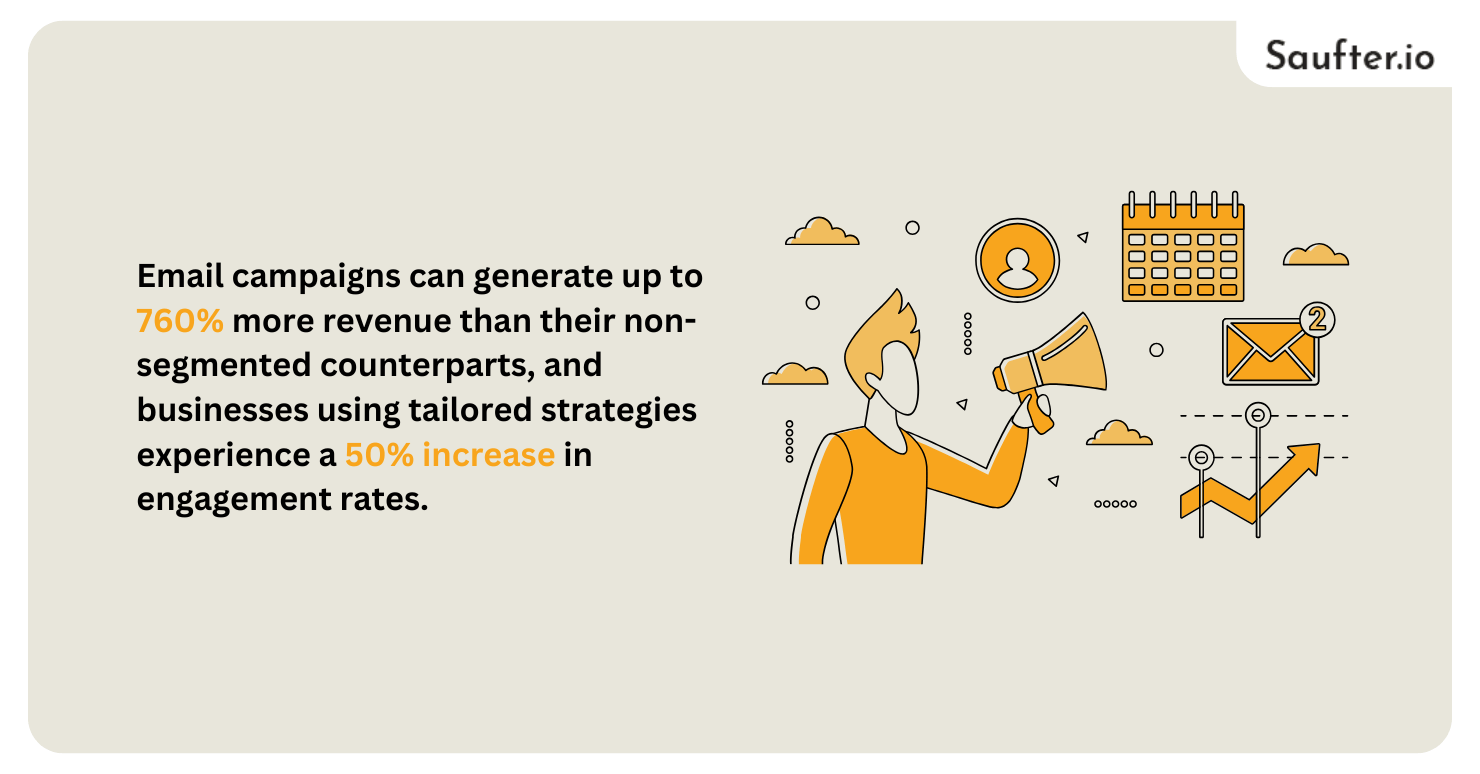
In this post, we’ll explore email segmenting, why it matters, and how you can harness its power to improve your overall digital marketing strategy.
Understanding Email Segmenting

In its most basic form, email segmenting means that you divide your email list into smaller groups based on specific criteria. Instead of sending a generic message to all your subscribers, you furnish your list with specific campaigns that are directly targeted to the interests and needs unique to each group. This method is all about ensuring that every message is relevant, timely, and tailored for the recipient, which results in the strengthening of the relationship with the customers and a higher conversion rate.
The process requires the collection of data, such as data from the customer, location, purchase behaviour, and psychological aspects, to classify your audience. You are enabled to craft campaigns that deliver targeted messaging by using this information, and it’s almost certain that your content will be attractive for each segment. By doing this, you enhance your email deliverability, and the ROI return is maximised.
The Importance of Email Segmenting in Digital Marketing
Why Segment Your Emails?
Sending the right message to the right audience is critical. Generic emails can lead to low open rates and minimal engagement. With the rapid advancements in digital technology, consumers expect a personalised experience every time they check their inbox.
Personalised experiences drive better engagement and conversion rates, while generic messages often fall flat.
Segmenting your emails allows you to:
- Deliver personalised experiences that speak directly to each subscriber.
- Optimise your campaigns with targeted messaging that reflects individual customer behaviours and preferences.
- Enhance your ROI boost by reducing wasted impressions and focusing on delivering content that matters.
When you leverage these benefits, you set the stage for an efficient and effective digital strategy. In today’s landscape, the method of grouping subscribers into distinct lists based on clear criteria is a cornerstone of successful campaigns. Businesses that adopt segmentation techniques can better nurture leads and create a more meaningful connection with their audience.
Implementing email segmentation in digital marketing not only improves communication but also establishes a long-term relationship between your brand and its customers.
Types of Email Segmentation
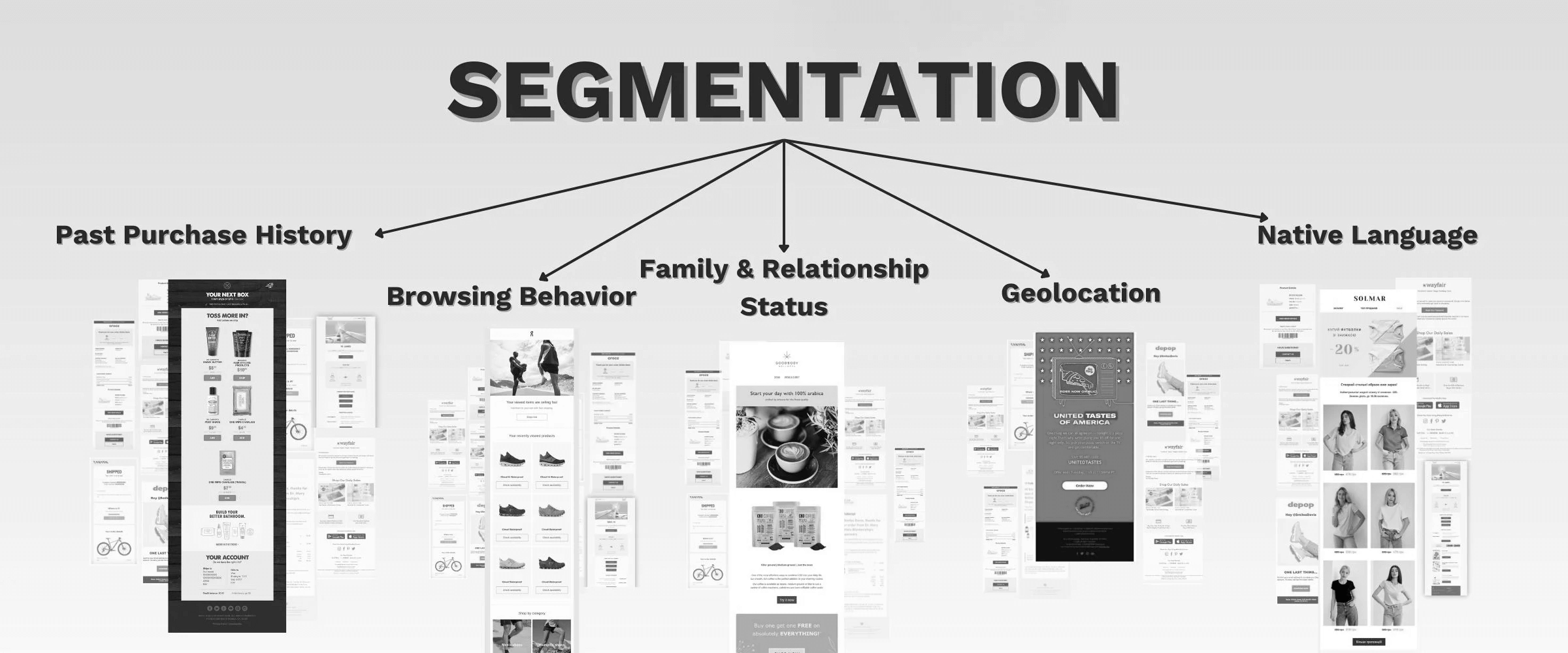
Successful segmentation strategies typically fall into a few key categories. Let’s break down the main types:
Demographic Segmentation
This is the most straightforward form of segmentation. By sorting your subscribers based on age, gender, education, or profession, you create a broad yet powerful way to customise your messages. Demographic segmentation is an ideal starting point—it’s like using a large mesh to filter out the noise before honing in on more specific criteria.
Geographic Segmentation
Geographic segmentation has to do with the way where subscribers are arranged in a particular area. This way is mostly used in making sure that the content is scheduled at the right time, the local events are covered, and the proper culture of the area is implemented. Whether you are the one motive for in-store events or you have to finish time-sensitive online offers, the data with geographic details influences the delivery time of the emails and campaign effectiveness in general.
Behavioural Segmentation
Behaviour-based segmentation sorts your audience according to how they interact with your brand. This includes purchase history, browsing patterns, and previous email interactions. By analysing these behaviours, you can create segments such as:
- Loyal Customers: Who regularly purchase or engage with your brand.
- Engaged Subscribers: Who actively click, open, and interact with your emails.
- Lapsed Consumers: Those who may have shown interest in the past but have become inactive.
This method enables you to re-engage dormant subscribers with personalised offers or rewards that re-spark their interest.
Psychographic Segmentation
The most advanced and sophisticated way to segment markets, psychographic segmentation takes into account the behaviours, competition, interests, and feelings of the audience. You could soon find out what matters to your regulars. As a result, you will be able to design more personal messages and thus drive more sales.
It may be a little bit complicated, as it requires a deeper level of data analysis, but the use of this targeted messaging method can be very effective in your communication with your most loyal customers.
Employment of such segmentation tactics can result in the harnessing of a precise system, which serves the subscribers with close accuracy and, in turn, results in improved campaign performance and expandable ROI.
Best Practices for Effective Email Segmentation
Even the best strategies need fine-tuning. Here are some actionable tips to ensure your segmentation efforts pay off:
Monitor Key Metrics Regularly
Continuous tracking of performance metrics—like open rates, click-through rates, and conversion rates—is essential. These insights enable you to adjust your segmentation criteria and messaging in real time, ensuring that your campaigns remain fresh and relevant.
Embrace the Power of Drip Campaigns
Drip campaigns are a series of automated emails that nurture your leads over time. By incorporating automated sequences, you can maintain consistent customer engagement and gradually guide your subscribers through the sales funnel. These campaigns are ideal for delivering personalised follow-ups based on subscriber behaviour and interests.
Refresh Your Segments Frequently
Consumer behaviour is constantly evolving. To avoid sending outdated content, regularly review and update your segmentation criteria. This might mean reclassifying subscribers based on new behaviours or updating the data points you use to segment your audience. Keeping your lists dynamic ensures that your messaging remains on point and continues to drive targeted messaging.
Leverage Data Wisely
Utilise analytics tools and reports to gather deep insights into your subscribers’ preferences and actions. Whether it’s through social media reports or customer surveys, the more you understand your audience, the better you can tailor your campaigns. Making data-driven decisions is the foundation of any successful segmentation strategy.
Remember, mastering email segmentation in digital marketing is not just about dividing your list; it’s about building a dynamic, evolving relationship with your audience through smart, strategic insights.
Real-World Applications and Success Stories
A retail company using e-commerce successfully enhanced its email approach through comprehensive segmenting methodologies. The company generated highly personal marketing materials by analysing purchase records and browsing activity of individual customers. The brand achieved a 30% boost in customer returns while experiencing a major decline in users who chose to unsubscribe.
The real achievement potential of appropriate segmentation techniques becomes apparent through these real-case success examples.
A service sector enterprise used a geographic segmenting strategy for sending offers targeted to specific market regions. The adjustment of email content for local events plus cultural understanding allows companies to achieve improved open rates while building better bonds with their regional clients, which confirms that targeted messaging creates stronger audience connections.
The cases demonstrate how any industry benefits from strategic segmentation because it creates a powerful communication method for email marketing that leads to real-world achievement.
Email segmentation in digital marketing lets businesses engage their audiences personally while driving improved engagement that results in higher revenue gains.
Email Segmentation Best Practices
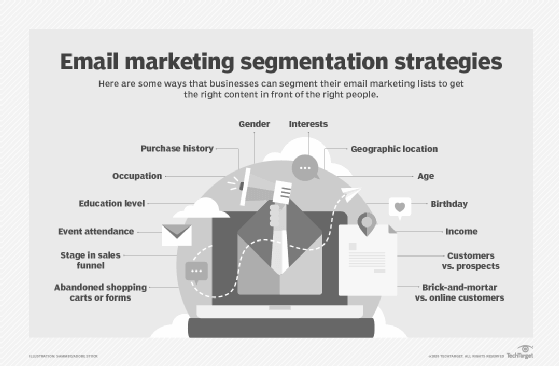
Effective email segmentation best practices are essential for transforming your email campaigns into highly personalised communication channels that resonate with each subscriber. By embracing email marketing audience segmentation, you can tailor your messaging to meet the specific needs and interests of your various audience segments. Begin by collecting robust data from reliable sources such as sign-up forms, purchase histories, and website behaviour analytics.
After collecting dependable information, use specific segmentation rules to establish different customer categories. The content needs to renew its segments periodically to maintain appropriate relevancy regarding changing customer conduct. Real-time interactions and new data inputs allow automation tools to simplify the segment dynamic adjustment process.
The implementation of dripping campaigns stands as a best practice within your approach. A series of programmed emails guides contact prospects through the sales process while delivering time-based content that adds value at each stage. Evaluating essential performance metrics will help you improve your segment-based approach through ongoing refinement of your strategy.
By leveraging email marketing audience segmentation effectively, you not only enhance personalisation but also improve ROI by reducing wasted impressions and focusing on content that truly matters. Ultimately, a systematic, data-driven approach to segmentation paves the way for more impactful, engaging email campaigns that foster long-term customer relationships.
Email Segmentation Benefits
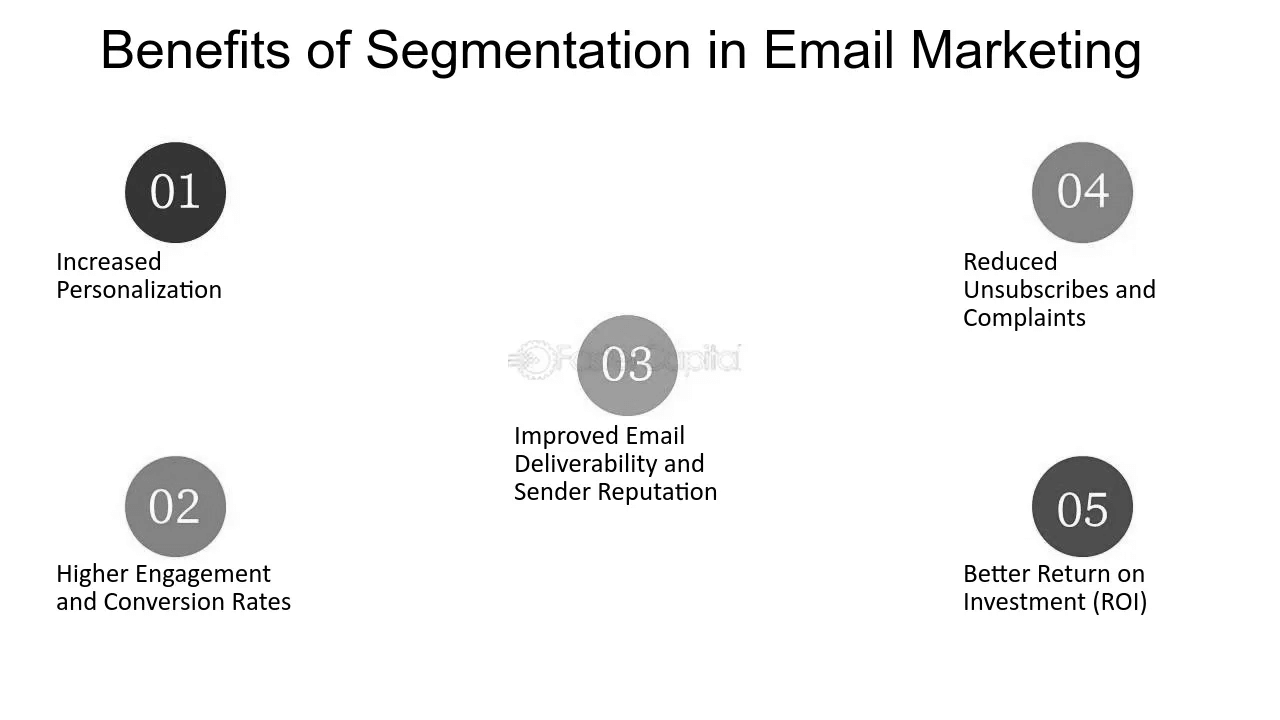
Email segmentation has extensive benefits, making it a critical tactic in modern digital strategies. One of the primary advantages of using email marketing audience segmentation is the ability to deliver targeted, relevant content to each subscriber group rather than a one-size-fits-all message. This precise targeting leads to higher open rates, better click-through metrics, and increased conversion rates because the content is specifically tailored to address the unique needs and behaviours of each segment.
The main advantage of segmenting your audience leads to better customer satisfaction levels. Email personalisation builds compelling client experiences, which lead users to establish trust and loyal customer relationships. Your subscribers will become repeat customers because personalised engagement helps them understand that their interests get proper attention.
The duration of segmented campaigns yields better investment returns since the approach concentrates on prospects who have demonstrated positive engagement. You can enhance your communication strategies via optimised future marketing through the performance analysis of segmented campaign data.
Segmentation of email marketing audiences decreases the number of subscribers who unsubscribe from communications. Your marketing success improves when you deliver matter-specific content because it prevents subscribers from receiving unwanted messages.
Let us now introduce you to the Best AI-Based Marketing Tool
Saufter: The Best AI-Based Digital Marketing Tool

In the fast-paced world of digital marketing, Saufter AI stands out as the ultimate solution for businesses looking to optimize their email campaigns with cutting-edge artificial intelligence. Whether you run a SaaS platform, an e-commerce store, or any other online business, Saufter AI empowers you with data-driven insights and automation to enhance engagement and conversions.
Key Features
- Competitor Email Tracking: Automatically monitors and analyzes your competitors’ email campaigns, helping you stay ahead of the curve.
- User Behavior Analysis: Studies user interactions on your website and tracks their journey to generate targeted campaign suggestions.
- Personalized Email Campaigns: AI-driven personalization enhances email deliverability and engagement, ensuring your messages reach the right audience.
- Cohort-Based Suggestions: Segment users based on their engagement levels and behaviors to optimize campaign effectiveness.
Conclusion
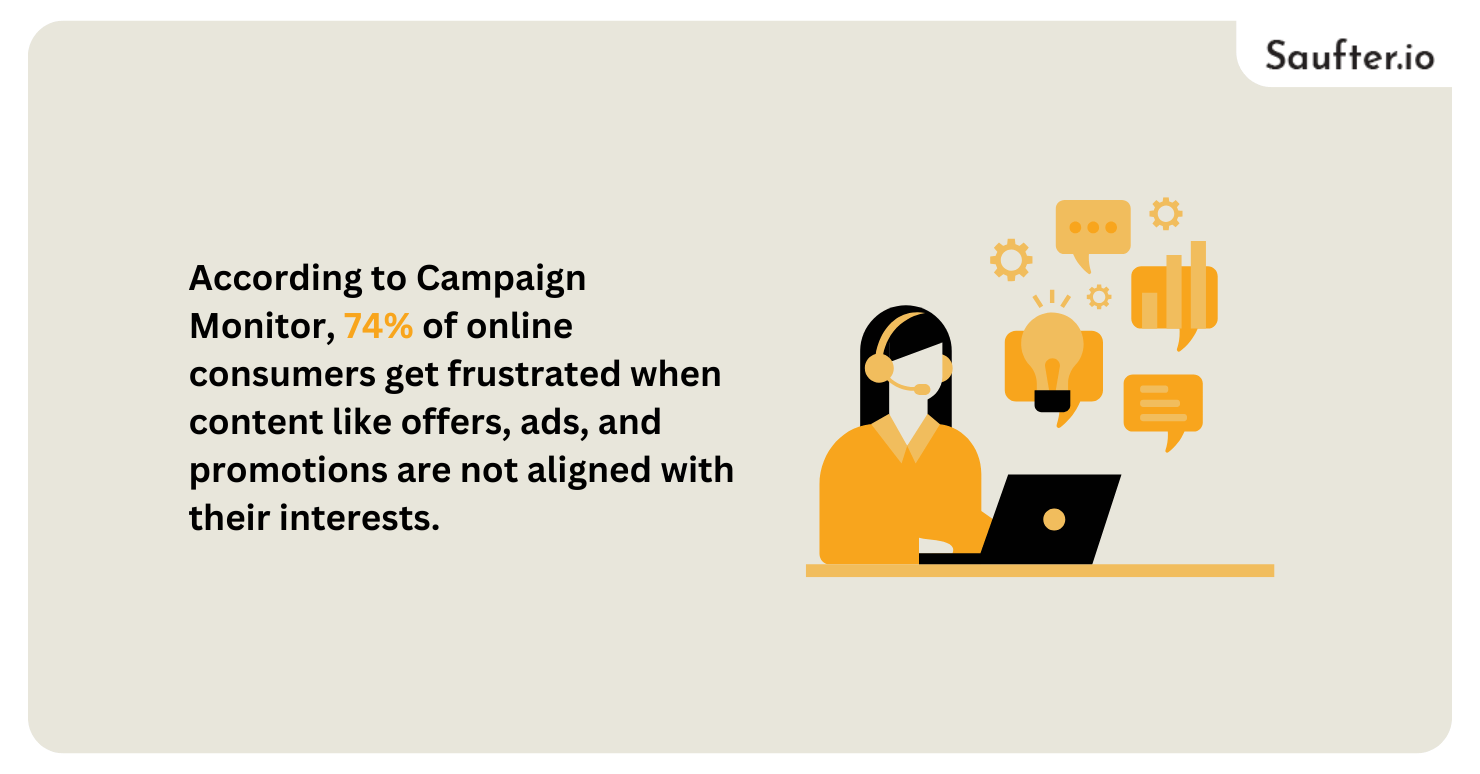
In summary, understanding and implementing effective email segmentation is a game changer in today’s digital marketing landscape. By breaking down your mailing list into carefully defined segments, whether by demographics, geographic location, behavioural patterns, or psychographic insights, you pave the way for delivering highly targeted messaging that resonates with your audience.
With evolving consumer expectations and an ever-competitive digital space, mastering this technique is no longer optional. It’s essential for any marketer looking to build lasting relationships and achieve measurable success.
According to Campaign Monitor, 74% of online consumers get frustrated when content like offers, ads, and promotions are not aligned with their interests.
Ultimately, the future of digital communication hinges on precision and personalization. Embracing email segmentation in digital marketing equips you with the tools to engage your audience more effectively, ensuring every email you send contributes to long-term growth. With every step, email segmentation in digital marketing proves its value, making it an indispensable component of modern digital strategies.
